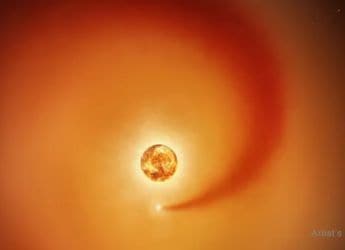- Home
- Internet
- Internet News
- Scientists develop world's first 'biological Internet'
Scientists develop world's first 'biological Internet'

Bio-engneering researchers Monica Ortiz and Drew Endy from Stanford University have created a biological mechanism to send genetic messages from cell to cell.
The system boosts the complexity and amount of data that can be communicated between cells and could lead to greater control of biological functions within cell communities, the Journal of Biological Engineering reports.
Biological internet could lead to biosynthetic factories in which huge masses of microbes collaborate to make more complicated fuels, pharmaceuticals and other useful chemicals, including the regeneration of tissue or organs in future, according to a Stanford statement.
Ortiz was even able to broadcast her genetic messages between cells separated by a gelatinous medium at a distance greater than seven centimetres.
"That's very long-range communication, cellularly speaking," she said.
M13 is a packager of genetic messages. It reproduces within its host, taking strands of DNA strands that engineers can control wrapping them up one by one and sending them out encapsulated within proteins produced by M13 that can infect other cells.
Once inside the new hosts, they release the packaged DNA message. The M13-based system is essentially a communication channel. It acts like a wireless Internet connection that enables cells to send or receive messages, but it does not care what secrets the transmitted messages contain.
"Effectively, we've separated the message from the channel. We can now send any DNA message we want to specific cells within a complex microbial community," said Ortiz, who led the study.
It is well-known that cells naturally use various mechanisms, including chemicals, to communicate, but such messaging can be extremely limited in both complexity and bandwidth.
Simple chemical signals are typically both message and messenger two functions that cannot be separated.
"If your network connection is based on sugar then your messages are limited to 'more sugar,' 'less sugar,' or 'no sugar'" explained Endy.
Cells engineered with M13 can be programmed to communicate in much more complex, powerful ways than ever before. In harnessing DNA for cell-cell messaging the researchers have also greatly increased the amount of data they can transmit at any one time. In digital terms, they have increased the bit rate of their system.
Catch the latest from the Consumer Electronics Show on Gadgets 360, at our CES 2026 hub.
- Samsung Galaxy Unpacked 2025
- ChatGPT
- Redmi Note 14 Pro+
- iPhone 16
- Apple Vision Pro
- Oneplus 12
- OnePlus Nord CE 3 Lite 5G
- iPhone 13
- Xiaomi 14 Pro
- Oppo Find N3
- Tecno Spark Go (2023)
- Realme V30
- Best Phones Under 25000
- Samsung Galaxy S24 Series
- Cryptocurrency
- iQoo 12
- Samsung Galaxy S24 Ultra
- Giottus
- Samsung Galaxy Z Flip 5
- Apple 'Scary Fast'
- Housefull 5
- GoPro Hero 12 Black Review
- Invincible Season 2
- JioGlass
- HD Ready TV
- Laptop Under 50000
- Smartwatch Under 10000
- Latest Mobile Phones
- Compare Phones
- OnePlus Turbo 6V
- OnePlus Turbo 6
- Itel Zeno 20 Max
- OPPO Reno 15 Pro Mini 5G
- Poco M8 Pro 5G
- Motorola Signature
- Vivo Y50e 5G
- Vivo Y50s 5G
- Lenovo Yoga Slim 7x (2025)
- Lenovo Yoga Slim 7a
- Realme Pad 3
- OPPO Pad Air 5
- Xiaomi Watch 5
- Huawei Watch 10th Anniversary Edition
- Acerpure Nitro Z Series 100-inch QLED TV
- Samsung 43 Inch LED Ultra HD (4K) Smart TV (UA43UE81AFULXL)
- Asus ROG Ally
- Nintendo Switch Lite
- Haier 1.6 Ton 5 Star Inverter Split AC (HSU19G-MZAID5BN-INV)
- Haier 1.6 Ton 5 Star Inverter Split AC (HSU19G-MZAIM5BN-INV)












